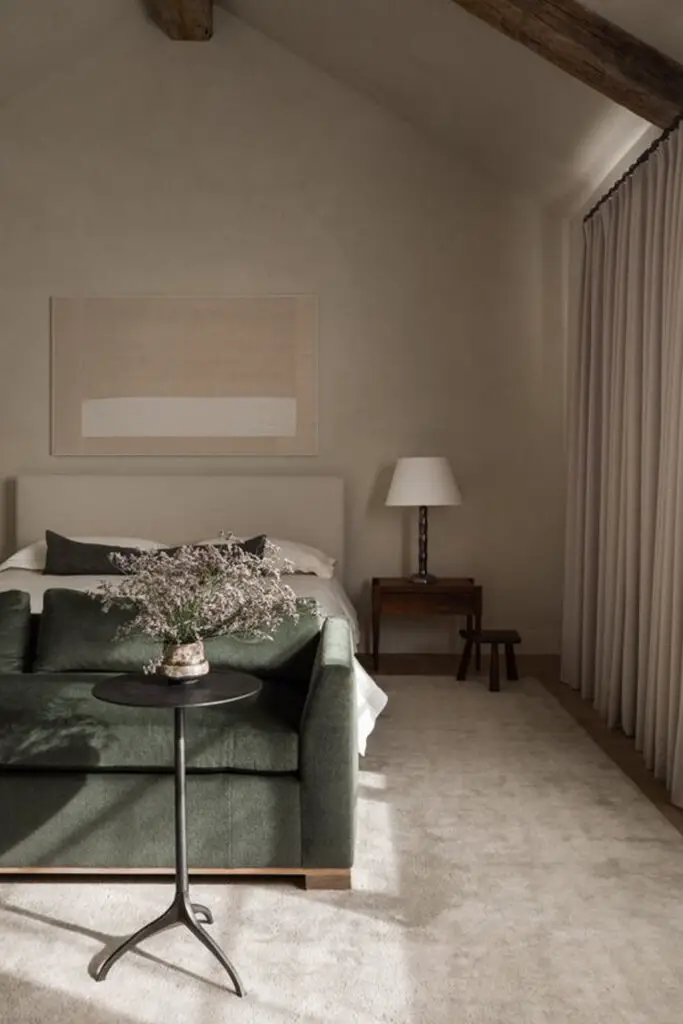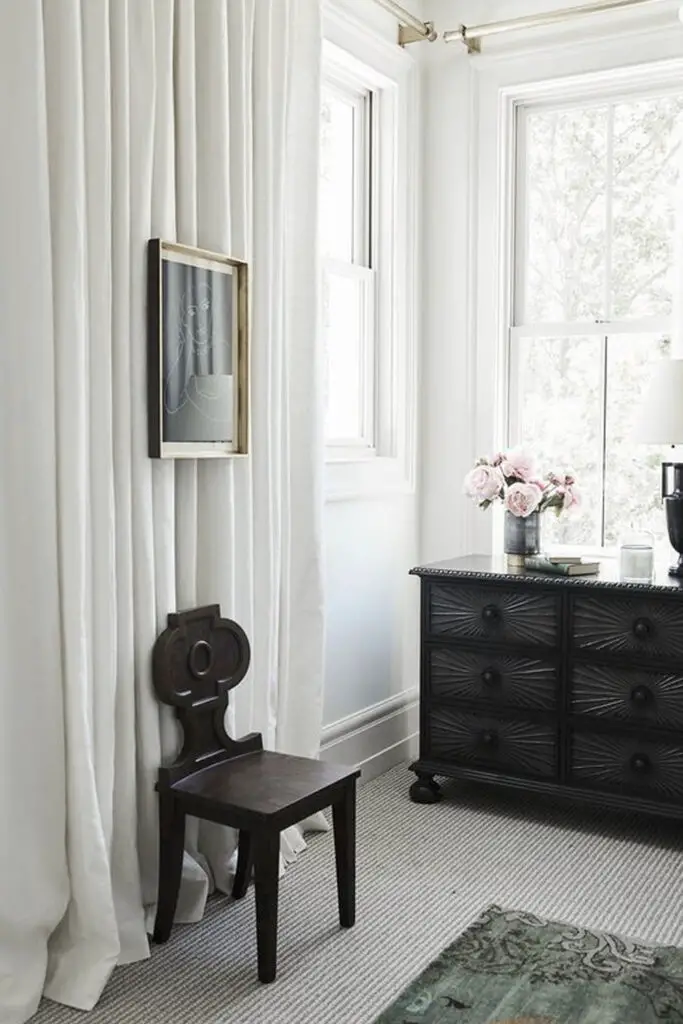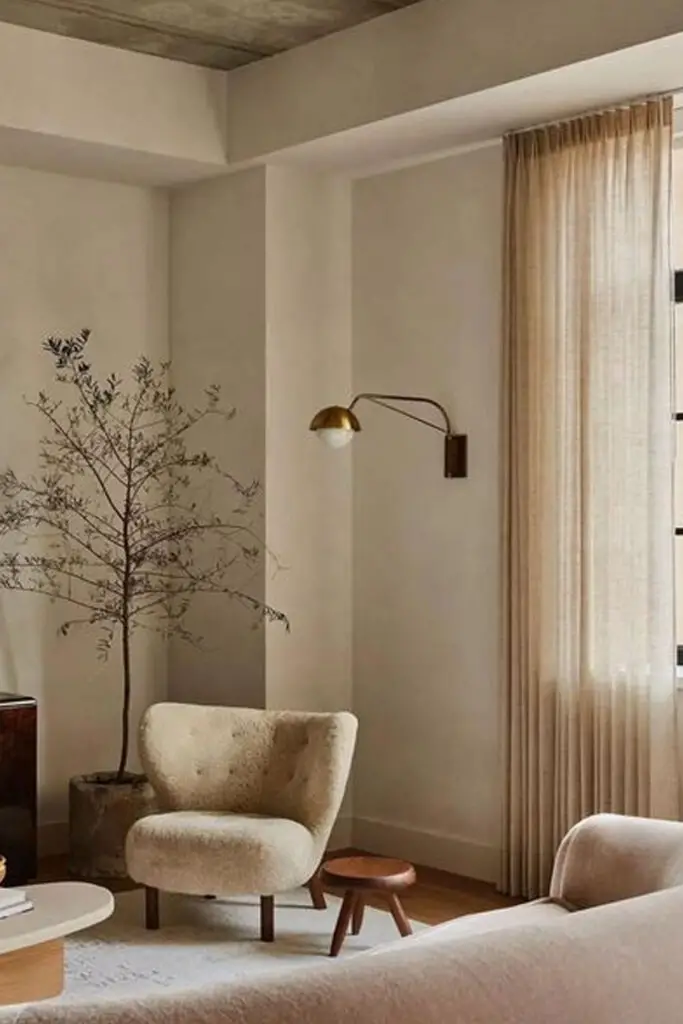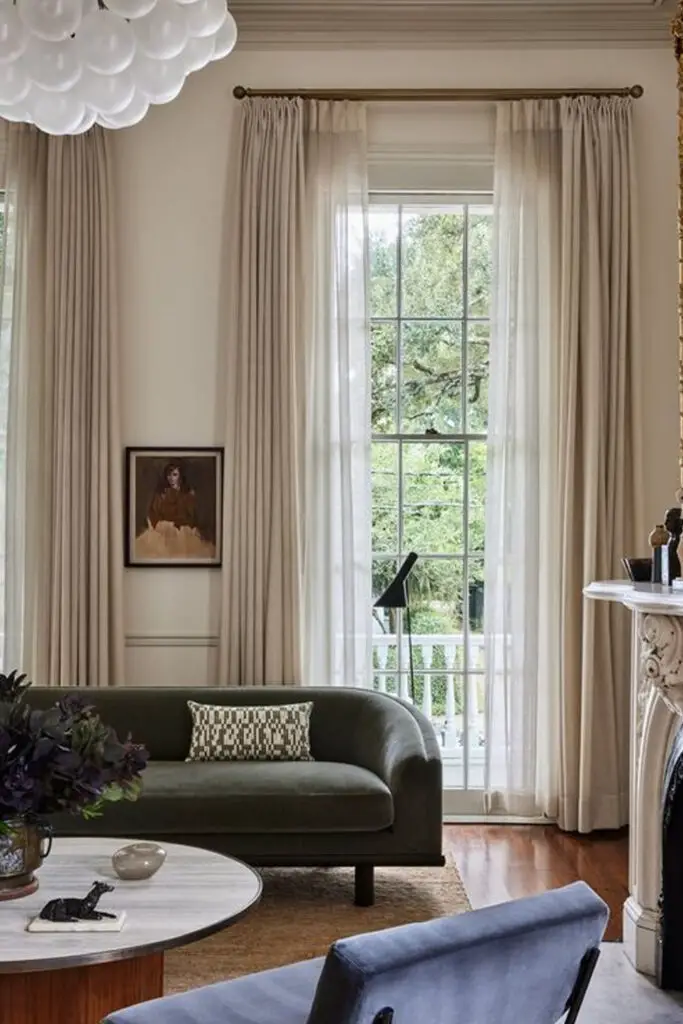How To Pick The Perfect Curtains- 8 Things To Consider BEFORE Buying Drapes & Curtains
My blog contains affiliate links- which means that if you click on a link and end up purchasing something, I’ll earn a small commission. You’ll never pay a penny more, and I can continue creating free content like this, so it’s a win-win!
share /


Choosing the right curtains for your space can feel overwhelming, but it doesn’t have to be! Whether you’re looking to add privacy, style, or simply elevate your room’s aesthetic, there are a few key things you should consider before making a purchase. From curtain materials and styles to how they’ll be hung, every detail plays a role in creating the perfect look for your home. In this post, I’m breaking down eight important factors to think about when buying curtains, so you can make the best decision for your space and style. Let’s dive in!
1. How you’ll hang the curtains
How you hang your curtains is just as important as the curtains themselves. Why? Because it affects the length you’ll need! For example, if you’re using a ceiling track, the curtains will need to be longer than if you’re using a standard rod. It’s always best to install your hardware first, then measure for the perfect curtain length. While most curtains come in standard lengths like 7, 8, 9, and 10 feet, those sizes don’t always work. Luckily, there are great custom options, like Homerilla—who I’m working with for my own home. With Homerilla, you can customize both the length and width for a perfectly tailored fit!
2. The curtain style
Next, consider the style of curtains, as you want something that complements your home’s aesthetic. The style you choose also ties into how you’ll hang them and the length you’ll need.
There are many styles to choose from, like rod pocket, tab top, back tab, ripple fold, and various pleated options. In my opinion, rod pocket, tab top, and back tab styles tend to look cheap and outdated. For a contemporary look, consider ripple fold curtains, where the hardware is barely visible. If you prefer a traditional or transitional vibe, pleated curtains are a great choice—some pleated styles even have a modern twist.
I’ve covered the most common curtain types and styles in this post, so take a look to see which one suits your space best!
3. The size of your windows & walls
Considering the size of your windows is a no-brainer, as it affects how many curtain panels you’ll need. But what’s less obvious is how much wall space you have on either side of the window. As a designer, my goal is to maximize natural light, so I aim to avoid blocking windows with curtains when they’re pulled back.
To achieve this, extend the curtain rod 6-12 inches beyond the window frame. This gives you enough space to pull the curtains back fully, letting in more light. I know this isn’t always possible, but it’s a good rule of thumb for most situations.
4. The rod color
The hardware and rod color you choose should contrast with your curtains and ideally match other accents in your home. Take a look at the hardware on your cabinets, pendant lights, or chandeliers—those colors are often a great fit for your curtain rod.
As I mentioned earlier, aim for some contrast between the rod and curtain colors. For example, pairing beige curtains with a gold rod might blend too much, but beige curtains with a silver or black rod will create more contrast and look more polished. It’s an easy detail to overlook, but it makes a big difference in the overall look!
5. The purpose of your curtains
A key consideration is the purpose of your curtains. Are you looking for privacy? Do you want to create a cozier atmosphere? Or is your goal to block out as much light as possible? Your answers will determine the type of lining you need.
If you already have blinds or shades, your curtains may serve more of an aesthetic purpose. But if you want both privacy and natural light, light-filtering curtains are a great option. For spaces like bedrooms where you need to block out all light, go for blackout curtains. Let the function guide your choice!
6. Curtain color
White or cream-colored curtains are a popular choice, and there’s nothing wrong with that—they’ve been a go-to for many of my clients. But they’re not your only option. Before choosing a curtain color, consider your wall color and the overall vibe you want.
If you’re not trying to add more color or contrast, or tie in other elements, curtains similar in color to your walls are a safe bet. Darker curtains on light walls (or vice versa) create a cozier feel, while light-colored curtains on light walls give texture and height without overwhelming the space, serving as a subtle backdrop.
Unless you’re aiming for a super modern look, try to pick a curtain color that differs slightly from your wall color. A little contrast goes a long way, even if it’s just a subtle difference!
7. The Material
When it comes to curtain materials, you have plenty of options. The most common ones you’ll find are linen, cotton, velvet, silk, polyester, or blends of these. Cotton is casual and easygoing, while linen or linen-like polyester adds a bit of formality. Velvet and silk, on the other hand, give a glamorous, luxurious feel.
Price often ties in with the material you choose. Linen, velvet, and silk tend to be more expensive, while polyester, blends, or cotton are more budget-friendly. It’s also important to note that 100% natural linen can fade when exposed to direct sunlight, so using a liner is a good idea to protect the fabric.
8. The Pattern (if any)
I don’t often choose patterned curtains, but there are times when they’re perfect for adding texture to a space. Usually, I prefer curtains to act as a backdrop rather than a focal point or piece of art. I like to reserve the artwork for the actual art in the room.
That said, patterned curtains can give a designer look and bring back that classic interior design style where multiple unique patterns harmonize beautifully. Do you know what I mean?
Patterned curtains can work especially well in nurseries or kids’ rooms, where you can afford to be a bit more adventurous with design. As adults, though, we often hesitate to commit to something we might tire of in a few years. For this reason, I typically stick to solid curtains and bring in patterns through rugs, pillows, or artwork. It’s a personal choice, but definitely something worth considering.


There you have it—eight things to consider before buying curtains. Phew! I think I’ve covered all the key points in this post. I hope this helps the next time you’re on the hunt for the perfect curtains! If I missed anything or you have more questions, feel free to drop a comment below, and I’ll be sure to get back to you!
Until next time,
Cheers
/ make a comment /